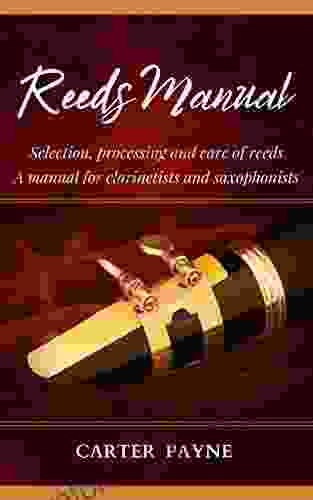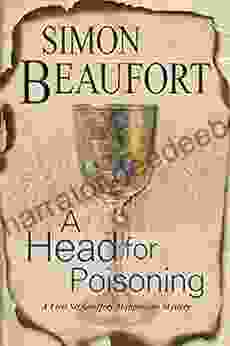The Eurasian Way of War: A Comprehensive Analysis of the Historical Evolution and Modern Applications of Eurasian Martial Arts

The Eurasian Way of War encompasses a vast tapestry of martial traditions that have evolved over centuries across the expansive Eurasian continent. From the steppes of Central Asia to the mountains of the Caucasus, from the forests of Siberia to the shores of the Mediterranean, warriors and generals have honed their skills in a multitude of combat arts. This article delves into the historical evolution and modern applications of the Eurasian Way of War, examining the core principles and techniques that have shaped the battlefield strategies and individual combat prowess of Eurasian warriors throughout history.
The roots of the Eurasian Way of War can be traced back to the nomadic tribes of the Eurasian steppes. These fierce warriors relied on horsemanship, archery, and melee combat to conquer vast territories. As they migrated and interacted with other cultures, they absorbed and adapted various martial traditions, such as the Chinese art of war, the Persian cataphract cavalry, and the Greco-Roman wrestling techniques.
Over time, distinct martial arts emerged in different regions of Eurasia. In Central Asia, the Mongols developed a highly effective system of mounted archery and close-quarters combat. In Eastern Europe, the Cossacks became renowned for their horsemanship and swordsmanship. In the Caucasus, the Circassians were feared for their agility and use of bladed weapons.
4.5 out of 5
| Language | : | English |
| File size | : | 1918 KB |
| Text-to-Speech | : | Enabled |
| Screen Reader | : | Supported |
| Enhanced typesetting | : | Enabled |
| Word Wise | : | Enabled |
| Print length | : | 217 pages |
During the medieval period, the Eurasian Way of War spread westward into Europe. The Vikings, with their skilled raiding tactics and brutal berserker warriors, terrorized coastal settlements and influenced the development of Western martial arts. The Mongols, under the leadership of Genghis Khan, conquered vast swaths of Eurasia, demonstrating the effectiveness of their mounted archery and siege warfare.
The Eurasian Way of War is characterized by a set of core principles that have remained relatively consistent throughout history. These principles include:
- Mobility: Eurasian warriors place great emphasis on mobility, both on and off the battlefield. They use horsemanship, archery, and guerrilla tactics to outmaneuver their opponents.
- Adaptability: The Eurasian Way of War is highly adaptable, allowing warriors to adjust their strategies and techniques to different environments and combat situations.
- Aggressiveness: Eurasian warriors are known for their aggressive approach to combat, preferring to close with their opponents and engage in close-quarters fighting.
- Skill in Multiple Weapons: Eurasian warriors are proficient in a wide range of weapons, including bows and arrows, swords, spears, and axes. They often combine different weapons to maximize their effectiveness.
- Discipline and Leadership: Discipline and leadership are essential elements of the Eurasian Way of War. Warriors are trained to obey their commanders and follow orders without question.
The Eurasian Way of War continues to have a significant influence on modern combat. Special forces units around the world adopt its principles of mobility, adaptability, and aggressiveness. The use of mounted archery, close-quarters combat, and guerrilla tactics is prevalent in counterterrorism and unconventional warfare operations.
In addition to its military applications, the Eurasian Way of War has also had a profound impact on the development of modern martial arts. Many popular martial arts, such as karate, judo, and wrestling, have their roots in the Eurasian Way of War. These martial arts emphasize the principles of mobility, adaptability, and skill in multiple weapons.
The Eurasian Way of War is a rich and diverse martial tradition that has played a pivotal role in global warfare and combat over centuries. Its core principles of mobility, adaptability, aggressiveness, and skill in multiple weapons continue to shape the battlefield strategies and individual combat prowess of warriors around the world. By understanding the historical evolution and modern applications of the Eurasian Way of War, we gain a deeper appreciation for the vast and enduring legacy of martial arts in human history.
4.5 out of 5
| Language | : | English |
| File size | : | 1918 KB |
| Text-to-Speech | : | Enabled |
| Screen Reader | : | Supported |
| Enhanced typesetting | : | Enabled |
| Word Wise | : | Enabled |
| Print length | : | 217 pages |
Do you want to contribute by writing guest posts on this blog?
Please contact us and send us a resume of previous articles that you have written.
 Page
Page Chapter
Chapter Story
Story Genre
Genre Library
Library Paperback
Paperback Magazine
Magazine Newspaper
Newspaper Paragraph
Paragraph Sentence
Sentence Bookmark
Bookmark Shelf
Shelf Preface
Preface Synopsis
Synopsis Manuscript
Manuscript Codex
Codex Bestseller
Bestseller Classics
Classics Library card
Library card Encyclopedia
Encyclopedia Dictionary
Dictionary Thesaurus
Thesaurus Narrator
Narrator Resolution
Resolution Librarian
Librarian Card Catalog
Card Catalog Borrowing
Borrowing Stacks
Stacks Research
Research Scholarly
Scholarly Lending
Lending Reading Room
Reading Room Rare Books
Rare Books Special Collections
Special Collections Literacy
Literacy Thesis
Thesis Awards
Awards Reading List
Reading List Theory
Theory Textbooks
Textbooks Stacy Mintzer Herlihy
Stacy Mintzer Herlihy Sharan B Merriam
Sharan B Merriam Doug Saunders
Doug Saunders Kathryn Tomasetti
Kathryn Tomasetti Namrata Sharma
Namrata Sharma Anne Malcom
Anne Malcom Jack T Marchewka
Jack T Marchewka Joan Dee Wilson
Joan Dee Wilson Frank Thoms
Frank Thoms Gary J George
Gary J George Douglas Hamilton
Douglas Hamilton Chuck Neighbors
Chuck Neighbors Simone Janson
Simone Janson Diego Eis
Diego Eis Leisy J Abrego
Leisy J Abrego Alessandro Molteni
Alessandro Molteni Gordon L Rottman
Gordon L Rottman Gelis Lara
Gelis Lara Will Leitch
Will Leitch Themis Nikoloudis
Themis Nikoloudis
Light bulbAdvertise smarter! Our strategic ad space ensures maximum exposure. Reserve your spot today!

 Ryūnosuke AkutagawaHow I Made It Over the Secret Place: A Journey of Overcoming Fear and Trauma
Ryūnosuke AkutagawaHow I Made It Over the Secret Place: A Journey of Overcoming Fear and Trauma Corbin PowellFollow ·14.3k
Corbin PowellFollow ·14.3k Fletcher MitchellFollow ·15.6k
Fletcher MitchellFollow ·15.6k Caleb CarterFollow ·9.3k
Caleb CarterFollow ·9.3k Damon HayesFollow ·5.3k
Damon HayesFollow ·5.3k Angelo WardFollow ·12.6k
Angelo WardFollow ·12.6k Leo MitchellFollow ·19.3k
Leo MitchellFollow ·19.3k Rubén DaríoFollow ·13.6k
Rubén DaríoFollow ·13.6k Isaac AsimovFollow ·12.6k
Isaac AsimovFollow ·12.6k

 Abe Mitchell
Abe MitchellUnveiling the Urban Cheating Rich System: A Comprehensive...
In today's complex and ever-evolving urban...

 Preston Simmons
Preston SimmonsSelection, Processing, and Care of Reeds: A Comprehensive...
Reeds are essential...

 Rob Foster
Rob FosterKeeper of the Grail: The Youngest Templar
Prologue: A Sacred...
4.5 out of 5
| Language | : | English |
| File size | : | 1918 KB |
| Text-to-Speech | : | Enabled |
| Screen Reader | : | Supported |
| Enhanced typesetting | : | Enabled |
| Word Wise | : | Enabled |
| Print length | : | 217 pages |
















